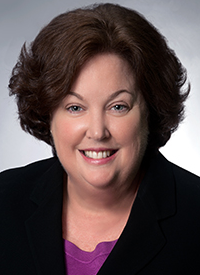Nurses Must Collaborate to Improve Access to Cancer Care
Certain populations are less likely to receive treatment for breast cancer. Nurses should lead a multidisciplinary team to improve that.
Karen E. Wickersham, PhD, RN

Certain populations, especially those who live in rural populations, tend to have worse breast cancer outcomes, according to research to be presented at the 2019 American Society of Clinical Oncology (ASCO) Annual Meeting.
However, oncology nurses can — and should – lead the efforts to reduce these disparities, explained study author Karen E. Wickersham, PhD, RN, an assistant professor at the University of South Carolina College of Nursing.
Wickersham and colleagues analyzed 2,723 cases of female breast cancer from patients aged 64 years and younger from study data that combined administrative claims from South Carolina’s Medicaid program and a state-based, private-payor health plan, match to data from the South Carolina Central Cancer Registry.
About a third (33.6%) of the women included in the dataset were African American, and 91.8% were non-Hispanic. Slightly less than half (48.8%) were married, and three-fourths (74.9% lived in urban areas. When it came to disease state, 16.9% had stage I disease; 13.9% with stage IIA; and 7.5% with stage IIB disease. Patient data was also stratified by zip code and the researchers analyzed the difference between patients living in rural versus urban areas.
“Our takeaway point from this is that women living in rural areas seem to have worse stage of disease at the time of diagnosis, and they have less access to care — which is not a surprising finding,” Wickersham said in an interview with Oncology Nursing News. “[Our findings] give us a place to start in terms of how we develop interventions to help all patients with breast cancer get access to care. That sounds like a really lofty goal, but that’s where nurses come into play.”
Wickersham mentioned that oncology nurses are “at the forefront of patient care,” but that is for the patients who come into clinics and hospitals to be treated in the first place.
“One of the challenges that we have is that we can’t help patients that we don’t see,” she said, mentioning that nurses have made great strides in the area of home healthcare and telehealth, helping to bring care to more vulnerable populations.
However, what works for one population may not work for another, especially in rural South Carolina, where residents may not have reliable cell phone signal or internet access.
Personalized interventions, as well as easy access to screening, is still needed for these patients, Wickersham emphasized, especially since patients who delay being seen by healthcare providers tend to be diagnosed at later stages and have poorer outcomes.
“How can we develop interventions that patients will use, [such as] interventions that will screen them earlier for disease, get them access to screening, and help them get access to treatment for disease?” she said. “Once they’re on treatment, we need to make sure they stay on treatment.”
To accomplish this, Wickersham said that nurses can lead the effort, but should not work alone. They should collaborate with policymakers, innovators, computer scientists, and other healthcare professionals to develop personalized approaches to improve — and initiate – care in these populations.
“I think that’s where our next steps are: identifying what works for the patients and then developing interventions specific to them,” she said. “We need to work out of the box… It’s not something that we can fix on our own. We can certainly lead it, and we should be at the table, but it should be in a group of people who come from different backgrounds.”

